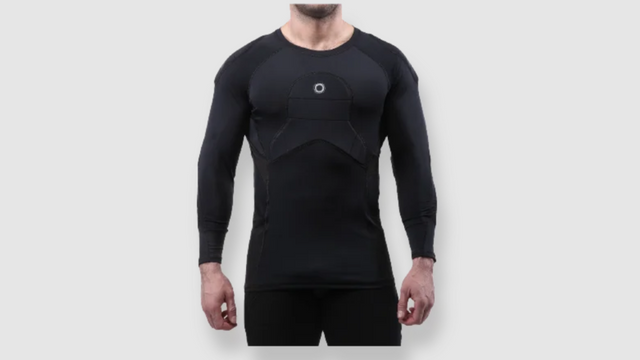Football Padded Shirts: The Perfect Balance of Protection and Comfort
When it comes to football, safety is a priority for every player. Whether you're an experienced professional or a weekend warrior, protecting your body from the impact of the game is essential. One of the most important pieces of equipment for this purpose is the football padded shirt. This piece of protective gear combines comfort, flexibility, and protection, making it a must-have for players of all levels.
Why Football Padded Shirts Are Essential
Football is a fast-paced, high-contact sport. Players often face intense physical challenges, from hard tackles to high-speed collisions. In such a dynamic environment, injuries are a common concern, particularly in areas like the ribs, shoulders, and spine. Traditional padding may be bulky or uncomfortable, but football padded shirts offer a solution by providing lightweight protection without restricting movement.
Football padded shirts are designed with strategically placed padding that absorbs shock and reduces the risk of injury. These shirts are typically made from flexible, breathable fabrics that ensure players can move freely while staying protected. The advanced design of these shirts ensures that the padding doesn't interfere with a player’s performance on the field, offering an optimal balance of protection and mobility.
Features of a High-Quality Padded Shirt
1. Breathable Fabric for Comfort
One of the standout features of modern football padded shirt is their use of breathable fabrics. These materials help regulate body temperature by allowing sweat to evaporate quickly, keeping the player dry and comfortable throughout the game. Whether you're playing in hot or cold conditions, the breathable design ensures that you remain comfortable even during the most intense moments of the match.
2. Strategic Padding Placement
High-quality football padded shirts feature strategically placed padding in areas most prone to injury. Common areas of focus include the ribs, shoulders, chest, and spine. The padding is typically lightweight, flexible, and made from materials like foam or gel that can absorb impact efficiently. The strategic placement of this padding ensures that players are protected where they need it most, without adding unnecessary bulk.
3. Moisture-Wicking Technology
Another important feature is moisture-wicking technology. Football padded shirts are designed to draw moisture away from the body, helping to keep players dry and preventing discomfort from excessive sweat. This feature not only enhances comfort but also helps reduce the risk of skin irritation during long hours of play. The moisture-wicking design ensures that players can maintain peak performance without being weighed down by sweat-soaked clothing.
Benefits of Wearing a Football Padded Shirt
1. Injury Prevention
The primary benefit of wearing a football padded shirt is injury prevention. With the padding strategically placed over vulnerable areas, players can reduce the impact from tackles, falls, or collisions. By absorbing the shock, the shirt helps to prevent bruises, fractures, and other painful injuries that can sideline a player for weeks or even months. For younger or less experienced players, these shirts provide an added layer of security that boosts confidence on the field.
2. Enhanced Performance
While safety is a major concern, it should never come at the expense of performance. Football padded shirts are designed to be lightweight and flexible, allowing players to move freely and comfortably. The shirt does not restrict motion, which is crucial for players who need to make quick turns, jumps, and sudden movements during a game. This makes them an excellent choice for athletes who want to balance protection with agility.
3. Versatility Across Weather Conditions
Another major advantage of football padded shirts is their ability to be worn in a wide range of weather conditions. These shirts are typically made from materials that keep you cool in the summer and warm in the winter. They are lightweight enough to be worn under a jersey in warmer months and can provide an added layer of warmth during colder games. With their moisture-wicking properties, these shirts are versatile, ensuring that players stay comfortable no matter the temperature.
How to Choose the Right Football Padded Shirt
1. Fit and Size
The fit of a padded shirt is crucial for both comfort and effectiveness. A shirt that is too tight may restrict movement, while one that is too loose can shift during the game, reducing the effectiveness of the padding. Look for padded shirts that offer a snug yet comfortable fit, ideally made from elastic materials that allow for flexibility and ease of movement.
2. Padding Thickness
The thickness of the padding should be chosen based on the player’s needs. For those playing at a high level of competition or those who want extra protection, thicker padding may be beneficial. On the other hand, for players seeking more mobility or playing in warmer climates, thinner padding may be preferable. Ensure that the padding is enough to protect key areas like the shoulders, chest, and ribs without compromising comfort.
3. Breathability
Since football games can last for extended periods, the breathability of the shirt is an important factor to consider. Opt for padded shirts made from moisture-wicking, breathable fabrics that keep you cool and dry. A shirt with adequate ventilation will prevent you from overheating and help maintain comfort throughout the game.
In the world of football, where every play can make the difference between winning and losing, having the right protection is essential. Football padded shirts provide a perfect combination of protection and comfort, allowing players to focus on their performance without worrying about injury. With breathable fabrics, strategic padding, and moisture-wicking properties, these shirts are designed to keep athletes safe, comfortable, and performing at their best. Whether you're an amateur or a professional, investing in a football padded shirt can make all the difference on the field.
